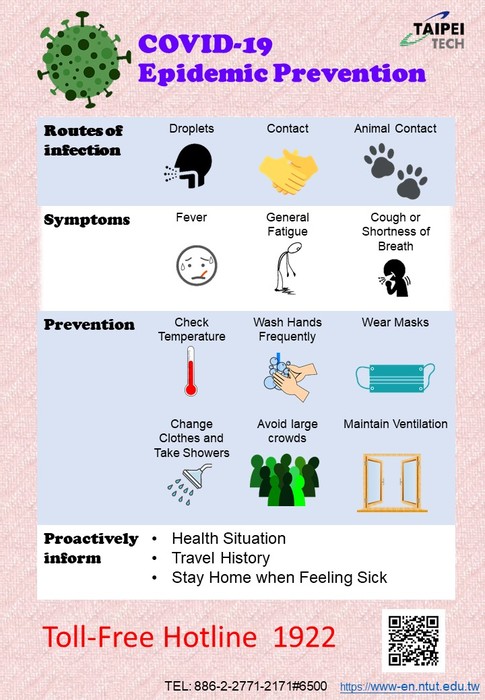What we should know about COVID-19's outbreak

The article is extracted from the UNICEF website (Novel coronavirus (COVID-19) outbreak: What you should know)
What is the novel coronavirus?
A novel coronavirus (CoV) is a new strain of coronavirus.
The disease caused by the novel coronavirus first identified in Wuhan, China, has been named coronavirus disease 2019 (COVID-19) – ‘CO’ stands for corona, ‘VI’ for virus, and ‘D’ for disease. Formerly, this disease was referred to as ‘2019 novel coronavirus’ or ‘2019-nCoV.’
The COVID-19 virus is a new virus linked to the same family of viruses as Severe Acute Respiratory Syndrome (SARS) and some types of common cold.
How does the novel coronavirus spread?
The virus is transmitted through direct contact with respiratory droplets of an infected person (generated through coughing and sneezing), and touching surfaces contaminated with the virus. The virus may survive on surfaces for several hours, but simple disinfectants can kill it.
What are the symptoms of novel coronavirus?
Symptoms can include:
- Fever
- Cough
- Shortness of breath
In more severe cases, infection can cause pneumonia or breathing difficulties. More rarely, the disease can be fatal.
These symptoms are similar to the flu (influenza) or the common cold, which are a lot more common than novel coronavirus. This is why testing is required to confirm if someone has novel coronavirus. It’s important to remember that key prevention measures are the same – frequent hand washing, and respiratory hygiene (cover your cough or sneeze with a flexed elbow or tissue, then throw away the tissue into a closed bin).
How can I avoid the risk of infection?
Here are five precautions you and your family can take to avoid infection:
- Wash your hands often. Use soap and water or an alcohol-based hand rub
- Cover your mouth and nose if you cough or sneeze with the inside of your elbow
- Don't get close to anyone who has cold or flu-like symptons